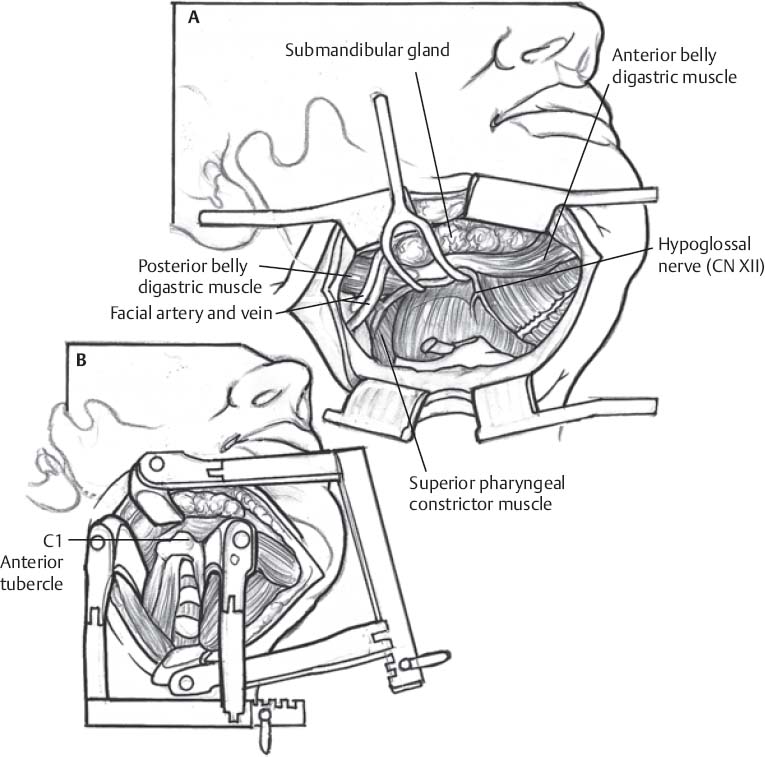♦ Preoperative
Imaging
- Magnetic resonance imaging to assess brain stem or spinal cord compression
- Plain x-rays to evaluate alignment
- Computed tomography with sagittal reconstructions to visualize extent of possible exposure (hard palate and vallecula)
Preoperative Care
- Somatosensory evoked potential/motor-evoked potentials may be useful
Equipment
- Self retaining anterior cervical retraction system
- Vessel loops may be useful to tag and reflect facial artery/vein and hypoglos-sal nerve.
Operating Room Set-up
- Nasal intubation may allow 1 cm additional jaw closure and increased exposure
- Somatosensory and motor-evoked potential monitoring (optional)
- Fluoroscopy (consider draping into field)
- Balanced microscope
Positioning
- Supine on operating table
- Head fixed in Mayfield head holder in slight extension and slight contralateral rotation
♦ Intraoperative
Exposure (Fig. 88.1)
- Horizontal incision 2 cm caudal to mandible line on right
- Divide platysma from midline to medial border of sternocleidomastoid
- Mobilize submandibular gland rostrally (see Fig. 88.1)
- Dissect out digastric and release from notch
- Identify facial artery and vein and protect laterally
- Identify hypoglossal nerve and protect
- Gently mobilize pharyngeal constrictor muscles to expose craniocervical junction
- Insert anterior cervical retractors (smooth blades)
- Confirm extent of exposure and midline with fluoroscopy
< div class='tao-gold-member'>
Only gold members can continue reading. Log In or Register to continue
Stay updated, free articles. Join our Telegram channel

Full access? Get Clinical Tree






